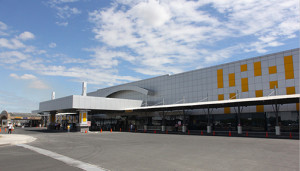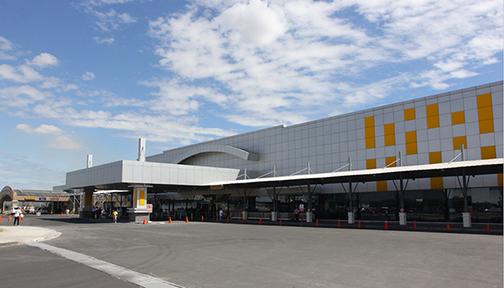 The planned P7.2- billion expansion of Clark International Airport (CRK) will be split up by the Department of Transportation and Communications (DOTC) into three phases, and the first stage is tentatively set for bidding out in the third quarter of the year.
The planned P7.2- billion expansion of Clark International Airport (CRK) will be split up by the Department of Transportation and Communications (DOTC) into three phases, and the first stage is tentatively set for bidding out in the third quarter of the year.
The first phase includes a P1.2-billion low-cost carrier passenger terminal building (PTB), still up for approval by the National Economic and Development Authority (NEDA) Board chaired by President Benigno Aquino III in its meeting in May.
“Hopefully we get it up to the NEDA Board chaired by the President by May of this year,” Transport Secretary Joseph Emilio Abaya said during a recent consultative meeting with various government agencies and stakeholders at Clark Freeport Zone.
The transport chief said that if the project is approved in May, bidding for the first phase can be done in the third quarter, and construction can start by the second quarter of 2016 with a completion target of 2018.
French firm Aeroports De Paris (ADPI) created the feasibility study for the proposed PTB and drafted its design.
Abaya said Aeroports’ design is “quite aggressive and on a larger side, but we are sticking to their plans and we will defend the plan before the NEDA board.”
However, he added that if they are told to scale down plans, “we are ready and we will get a consultant to revise the plans.”
Clark International Airport Corp. (CIAC) president and executive officer Emigdio Tanjuatco III clarified that the PTB will not only house budget carriers but legacy carriers that operate in CRK as well. He added that CIAC is convincing Emirates to operate its international flights, and AirAsia Philippines and PAL Express to operate their domestic flights in the Northern Luzon hub.
Currently, CRK is host to Asiana Airlines, Air Asia, Cebu Pacific Air, Dragonair, Jin Air, Seair, Qatar Airways, and Tigerair.
The second phase of the project is expected to raise CRK’s annual capacity to 46 million passengers by 2025, according to Tanjuatco.
The third phase, on the other hand, involves building three parallel runways and a high-speed train and is estimated to further bring the air hub’s capacity to 80 million passengers per annum by 2032.
CRK currently has two parallel runways, both measuring 3,200 meters long, with the primary runway having a width of 60 meters and the secondary runway with 45 meters. One of the two runways will be extended to 4,000 meters to accommodate new-generation wide-body aircraft.
Audit passer
Meanwhile, CIAC has again passed the audit conducted by the TUV Rheinland Philippines, Inc. on March 4 on the efficiency of its international passenger facilitation and of all internal operating processes.
Specifically, CIAC passed the Surveillance Audit on ISO-9001:2008 Quality Management System. The audit report noted that CIAC “has established and maintains an effective system to ensure compliance with its policy and objectives” and that the company “complies with, adequately maintains, and implements the requirements of the standard.”
Seven positive findings and several opportunities for improvement were cited in the report. Among the positive actions found was the acquisition of the two Rosenbauer fire trucks that lifted CRK to Category 10 in terms of handling emergency disasters, the highest rating set by the International Civil Aviation Organization.
CIAC first obtained its ISO 9001:2008 Certification in 2010, and it was renewed three years later after the external auditors determined that the corporation had complied with the requirements of the International Organization for Standardization. In 2016, CIAC will try to secure a new certification under the upgraded version of ISO 9001:2015.





